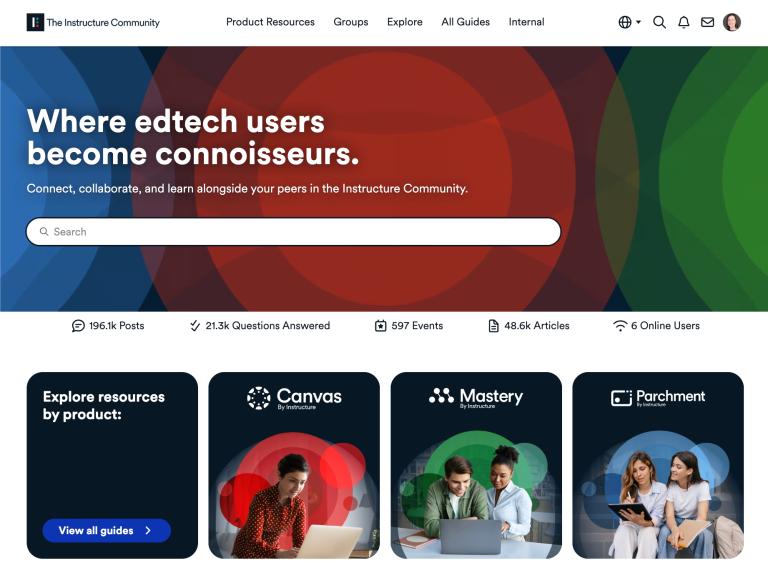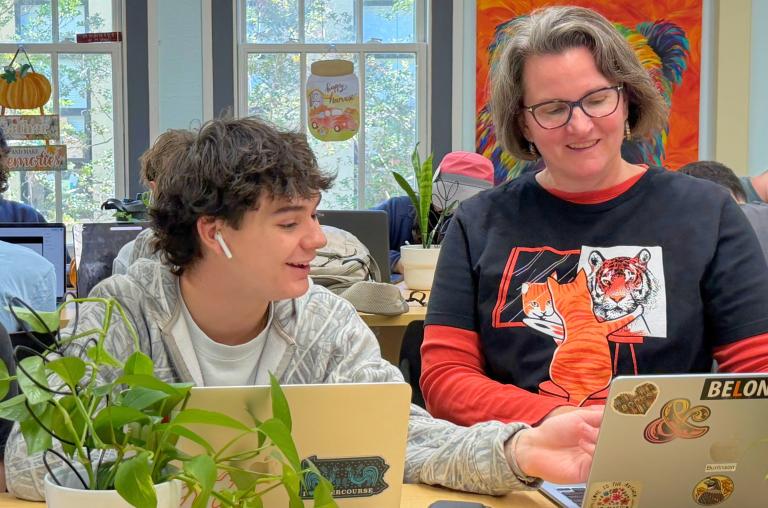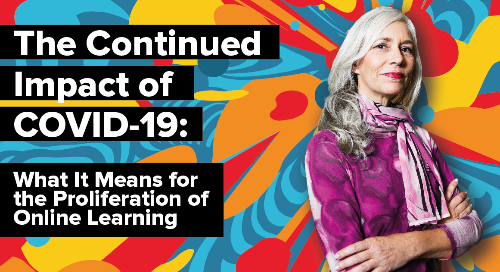The global impact of COVID-19 has created immense challenges for higher education spanning multiple semesters.
In fact, a new study from the 2021 Survey of College and University Admissions Officers shows that 43% of survey respondents expected Fall 2021 student enrollment to be lower than in the Fall of 2020.
But it’s not just enrollments that have been impacted. Administrators, faculty and students have had to deal with the cancellation of in-person events, the implementation of mask-wearing policies, and the rollout of new online platforms for remote learning, among other measures, all while managing the potential health risks associated with the disease.
We asked several pandemic-specific questions in our 2021 global benchmark study, the State of Student Success and Engagement in Higher Education. Here’s what we discovered:
Throughout the pandemic, 70% of respondents switched to full-time online/remote learning and 27% switched to part-time online/remote learning because of COVID-19. As of July 2021, only 21% of respondents have returned to fully in-person learning.
Plus, only 4% of respondents stated that their higher education institution has not implemented any changes due to COVID-19.
Online Learning and COVID-19
While online learning was already prevalent and increasing in popularity prior to the pandemic, and intentionally designed online programs have been around for decades, institutions are currently grappling with a monumental shift in the perception and acceptance of widespread online education.
Ultimately, our survey found that the emergency online delivery of many programs throughout the pandemic has had negative effects on student success and engagement.
And the impact has grown over the past year. Most respondents say COVID-19 has impacted:
- Student success (2020: 85% vs. 2021: 88%)
- Student academic progress (2020: 71% vs. 2021: 75%)
- Work/career readiness (2020: 70% vs. 2021: 76%)
Additionally, more students are falling behind on their studies than before (2020: 70% vs. 2021: 75%).
Region-specific COVID impacts
Over the past year, perceptions of online learning have shifted across the globe.
In Asia Pacific, for example, preference for online learning decreased for APAC (2020: 62% vs. 2021: 53%).
In Europe and the Middle East , however, preference for online learning increased (2020: 45% vs. 2021: 49%).
Overall, Latin American respondents were significantly more likely to believe that COVID-19 has impacted their daily life (86%) and led to negative outcomes for students, specifically in:
- Engagement (82%)
- Work readiness (81%)
- Academic progress (82%)
- Falling behind (82%)
Students and Administrators are Adapting to Online Learning
Administrators are significantly more likely to have a more positive opinion toward online learning (63%) and have an increased preference for it (61%) since COVID-19.
However, the percentage of students and administrators who said they had a more positive opinion toward online learning than before COVID-19 stayed the same across all regions.
This data shows that both students and administrators have been adapting to the proliferation of online learning since the global pandemic began.
Administrators are significantly more likely than students to say their preference for online learning has increased and that they now have a more favorable opinion toward online learning than before the pandemic. For students in 2021, the preference for online learning decreased (50% vs. 47%) as did a positive opinion toward online learning (50% vs. 46%).
Socioeconomic Factors Influence Perceptions of Online Learning
Socioeconomic factors continue to influence student opinions about online learning.
From 2020 to 2021, we saw a significant drop in positive opinion toward online learning post-COVID-19 among self-identified upper economic class students, while self-identified lower economic students stayed about the same.
Preference for online learning dropped significantly for both groups, with upper economic class students dropping 20% and lower economic class students dropping 5%.
2020: A more positive opinion about online learning after COVID-19 than before
69% of self-identified upper economic class students somewhat or strongly agree
vs.
48% of self-identified lower economic class students
2021: A more positive opinion about online learning after COVID-19 than before
48% of self-identified upper economic class students somewhat or strongly agree
vs.
45% of self-identified lower economic class students
2020: Increased preference for online learning after COVID-19
69% of self-identified upper economic class students somewhat or strongly agreed that they have an increased preference for online learning after COVID-19
vs.
52% of self-identified lower economic class students
The data indicates online/remote learning fatigue from self-identified upper economic class students.
Moving Forward with Digital Transformation
Meanwhile, institutions are continuing to move forward, accepting the possibilities stemming from forced digital transformation and increasing empathetic understanding amongst faculty and students.
In today’s environment, adapting is the name of the game.
Institutions may struggle to rebuild a sense of continuity for students and faculty alike should local COVID-19 outbreaks continue to disrupt in-person campus interactions. The ability to scale up and down in online, hybrid, and in-class capabilities will continue to be critical to student, faculty, and institution success.
Organizations that can continue to drive improvements in the student experience as it relates to online learning will best position themselves and their students for success. This includes ongoing efforts to identify and support students at higher risk for failure, including those who may be experiencing socioeconomic disparities.
Faculty can seek ways to foster a supportive and inclusive digital environment, including holding virtual office hours and building positive relationships with students virtually.
And finally, institutions should continue to champion the benefits and flexibility of asynchronous, on-demand courses that fit non-traditional students’ lifestyles and encourage students to take ownership of their own learning, while focusing on increasing interactive technology usage in online courses and on campus to positively influence student attitudes toward online learning and meet their collaboration needs.
This approach will not only help students in their pursuit of traditional degrees and their overall engagement, but also position them for today’s modern workforce by augmenting digital literacy and increasing skill sets.
Working with Hanover Research, we fielded a survey in 18 countries, asking 7,787 current students, administrators, and faculty from 2-year, 4-year, public, and private higher education institutions to define measurements of student success and identify factors for engagement.
Download the Report
Get more insights from our 2021 State of Student Success and Engagement in Higher Education. Download the report now here.
Related Content
 inst-3step.jpg
inst-3step.jpgBlogs
 community-homepage.jpg
community-homepage.jpgBlogs
 kim-classroom.jpg
kim-classroom.jpgBlogs
